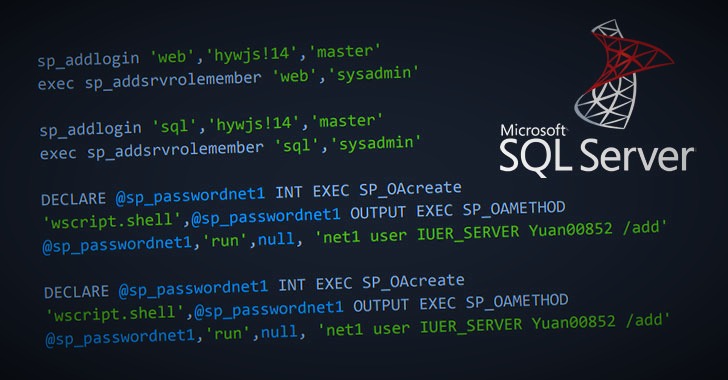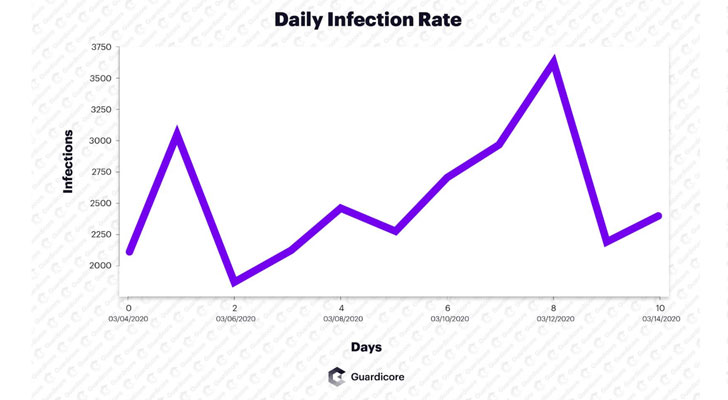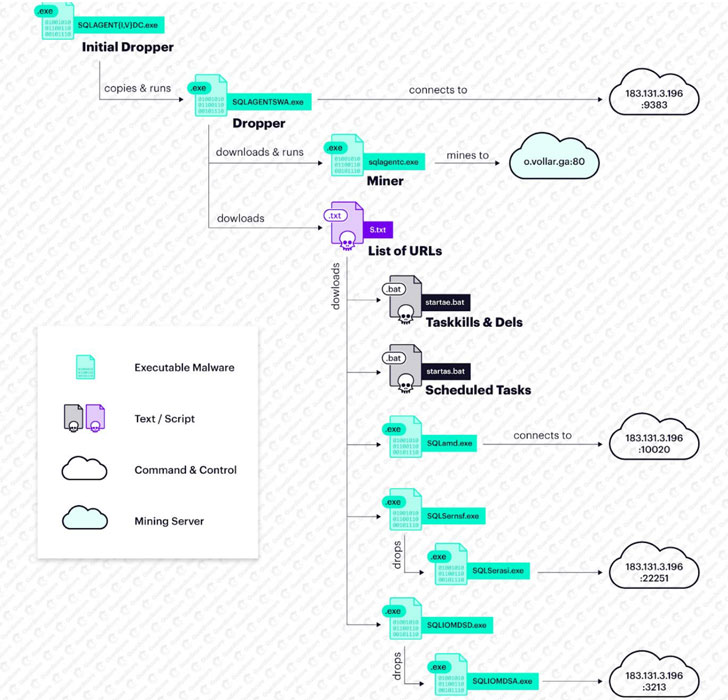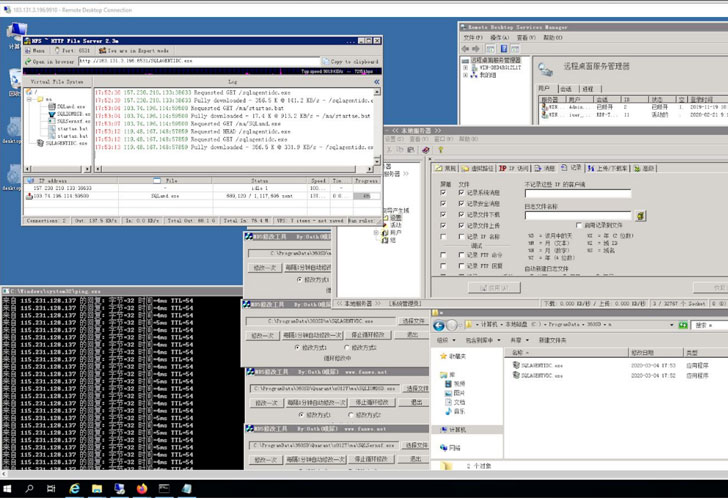
Cybersecurity researchers today uncovered a sustained malicious campaign dating back to May 2018 that targets Windows machines running MS-SQL servers to deploy backdoors and other kinds of malware, including multi-functional remote access tools (RATs) and cryptominers.
Named "Vollgar" after the Vollar cryptocurrency it mines and its offensive "vulgar" modus operandi, researchers at Guardicore Labs said the attack employs password brute-force to breach Microsoft SQL servers with weak credentials exposed to the Internet.
Researchers claim the attackers managed to successfully infect nearly 2,000-3,000 database servers daily over the past few weeks, with potential victims belonging to healthcare, aviation, IT & telecommunications, and higher education sectors across China, India, the US, South Korea, and Turkey.
Thankfully for those concerned, researchers have also released a script to let sysadmins detect if any of their Windows MS-SQL servers have been compromised with this particular threat.
Vollgar Attack Chain: MS-SQL to System Malware
The Vollgar attack starts off with brute-force login attempts on MS-SQL servers, which, when successful, allows the interloper to execute a number of configuration changes to run malicious MS-SQL commands and download malware binaries.
"Attackers [also] validate that certain COM classes are available - WbemScripting.SWbemLocator, Microsoft.Jet.OLEDB.4.0 and Windows Script Host Object Model (wshom). These classes support both WMI scripting and command execution through MS-SQL, which will be later used to download the initial malware binary," the researchers said.
Aside from ensuring that cmd.exe and ftp.exe executables have the necessary execute permissions, the operator behind Vollgar also creates new backdoor users to the MS-SQL database as well as on the operating system with elevated privileges.
Upon completion of the initial setup, the attack proceeds to create downloader scripts (two VBScripts and one FTP script), which are executed "a couple of times," each time with a different target location on the local file system to avert possible failures.
One of the initial payloads, named SQLAGENTIDC.exe or SQLAGENTVDC.exe, first proceeds to kill a long list of processes with the goal of securing the maximum amount of system resources as well as eliminate other threat actors' activity and remove their presence from the infected machine.
Furthermore, it acts as a dropper for different RATs and an XMRig-based crypto-miner that mines Monero and an alt-coin called VDS or Vollar.
Attack Infrastructure Hosted On Compromised Systems
Guardicore said attackers held their entire infrastructure on compromised machines, including its primary command-and-control server located in China, which, ironically, was found compromised by more than one attack group.
"Among the files [on the C&C server] was the MS-SQL attack tool, responsible for scanning IP ranges, brute-forcing the targeted database, and executing commands remotely," the cybersecurity firm observed.
"In addition, we found two CNC programs with GUI in Chinese, a tool for modifying files' hash values, a portable HTTP file server (HFS), Serv-U FTP server and a copy of the executable mstsc.exe (Microsoft Terminal Services Client) used to connect to victims over RDP."
Once an infected Windows client pings the C2 server, the latter also receives a variety of details about the machine, such as its public IP, location, operating system version, computer name, and CPU model.
Stating that the two C2 programs installed on the China-based server were developed by two different vendors, Guardicore said there are similarities in their remote control capabilities — namely downloading files, installing new Windows services, keylogging, screen capturing, activating the camera and microphone, and even initiating a Distributed Denial-of-Service (DDoS) attack.
Use Strong Passwords to Avoid Brute-Force Attacks
With about half-a-million machines running MS-SQL database service, the campaign is yet another indication that attackers are going after poorly protected database servers in an attempt to siphon sensitive information. It's essential that MS-SQL servers that are exposed to the internet are secured with strong credentials.
"What makes these database servers appealing for attackers apart from their valuable CPU power is the huge amount of data they hold," Guardicore researchers concluded. "These machines possibly store personal information such as usernames, passwords, credit card numbers, etc., which can fall into the attacker's hands with only a simple brute-force."
Source: The Hacker News.



Comments
Post a Comment